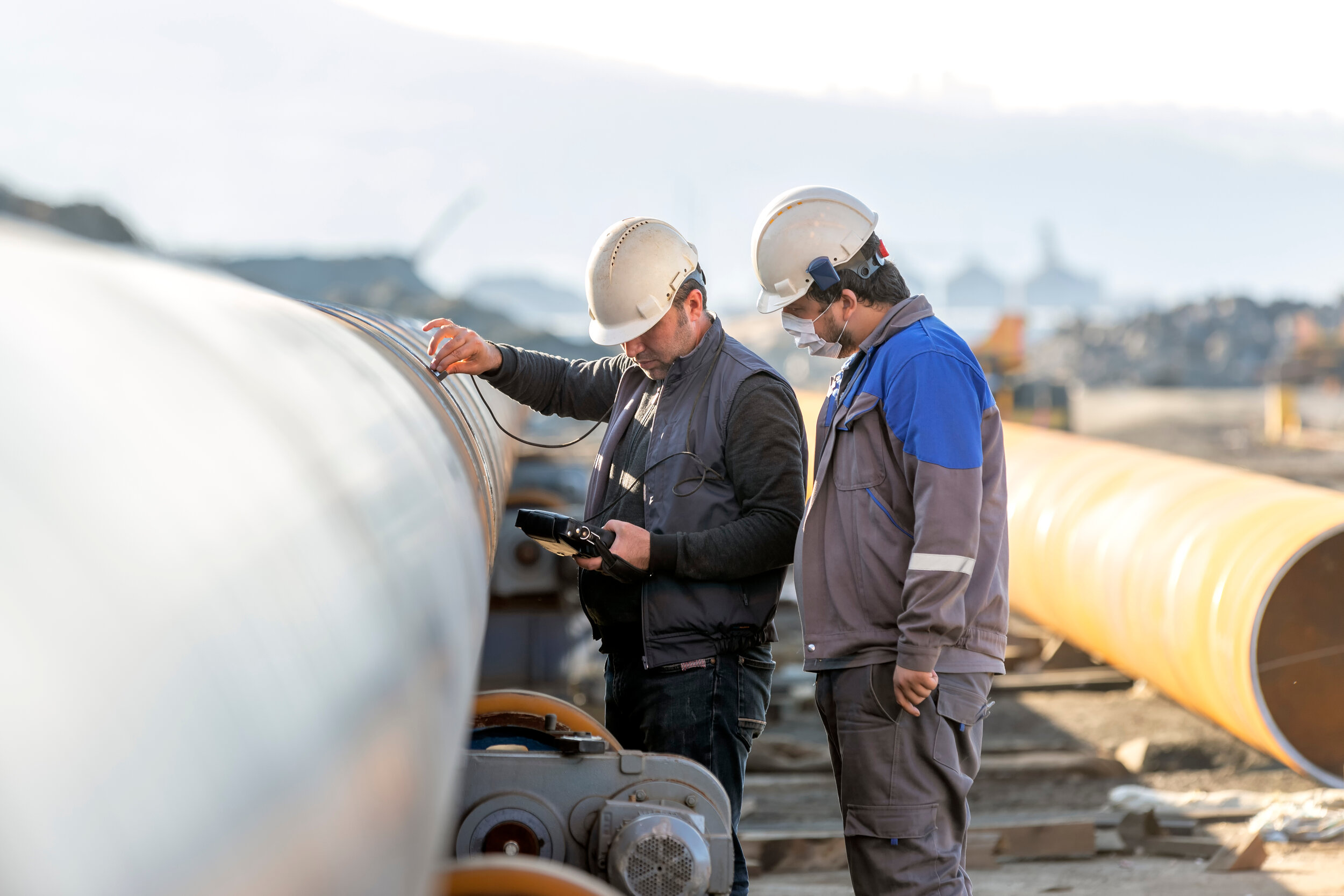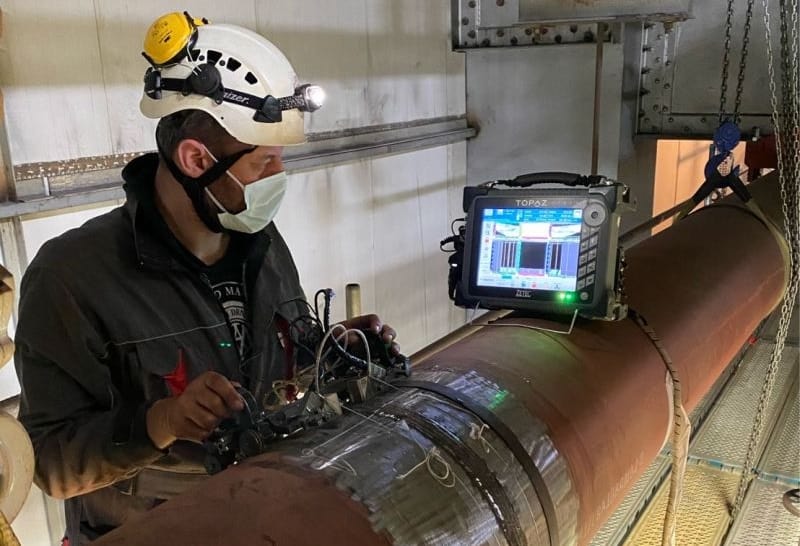Comprehensive Overview of Pipe Welding Inspection Procedures
In the realm of pipeline building and construction, making certain the integrity and safety of welded joints is critical. Pipe welding examination treatments play an essential role in guaranteeing that welded links fulfill stringent sector criteria and requirements. From thorough pre-welding examinations to thorough post-weld evaluations, a well-defined evaluation process is important for maintaining the architectural strength of pipelines. Recognizing the intricacies of welding examination procedures is not just a governing need but also a basic facet of maintaining the dependability of these crucial infrastructures.
Pre-welding Evaluation Preparations
Prior to beginning the welding process, thorough pre-welding examination prep work are important to ensure the honesty and top quality of the weld joint. These preparations involve a careful evaluation of the materials to be bonded, the welding devices, and the work setting. By conducting thorough pre-welding examination preparations, possible problems can be identified and solved early on, leading to premium and dependable weld joints.
Welding Procedure Credentials
Extensive pre-welding inspection preparations lay the structure for the vital procedure of Welding Procedure Credentials, guaranteeing the honesty and quality of the weld joint. Welding Treatment Qualification (WPQ) is a crucial action in the welding process that entails testing and accrediting welding procedures to ensure they fulfill particular requirements and requirements. The WPQ process typically includes welding treatment specification development, welding treatment credentials testing, and paperwork of the outcomes.
Throughout welding procedure spec advancement, essential details such as the welding process, welding products, joint layout, and welding parameters are defined to produce a thorough treatment. Subsequently, welding procedure certification screening is performed to validate the proposed procedure's stability. This screening usually involves welding test discount coupons that go through different mechanical and non-destructive examinations to analyze the weld's top quality and adherence to the defined criteria.
In-process Weld Inspection
During the welding process, in-process weld inspection plays an important function in making sure the top quality and honesty of the weld joint - Pipeline Welding Inspection. This sort of inspection entails monitoring the welding parameters, assessing the weld grain development, and identifying any kind of possible issues or stoppages as they take place. By carrying out in-process weld assessments, welding operators can quickly deal with any concerns that might develop, thus making certain and stopping further defects that the last weld satisfies the required requirements
Usual techniques used for in-process weld examination include visual assessment, fluid penetrant screening, magnetic particle screening, ultrasonic testing, and radiographic screening. Aesthetic evaluation is often the primary step in the process, permitting examiners to aesthetically examine the weld for surface abnormalities such as cracks, porosity, or insufficient combination. Advanced methods like ultrasonic testing and radiographic screening offer thorough insights right into the interior framework of the weld, guaranteeing that there are no surprise problems that can jeopardize the weld joint's toughness and integrity. On the whole, in-process weld evaluation is necessary for maintaining the high quality and reliability of welded pipes.
Non-destructive Testing (NDT)
Non-destructive Screening (NDT) is an essential method utilized in pipe welding examination to assess the integrity of weld joints without triggering damages to the bonded framework. By making use of various NDT techniques, visit examiners can examine the high quality of welds and recognize any kind of defects or suspensions that may jeopardize the architectural strength of the pipe. Common NDT methods used in pipeline welding evaluation include Radiographic Testing (RT), Ultrasonic Testing (UT), Magnetic Particle Checking (MPT), Fluid Penetrant Screening (LPT), and Visual Testing (VT)
RT involves making use of X-rays or gamma rays to generate pictures of the inner framework of the weld, permitting assessors to detect defects such as porosity, cracks, or insufficient blend. UT makes use of high-frequency acoustic waves to identify imperfections under the surface area of the weld, using in-depth info regarding the size and area of issues. MPT and LPT are made use of to determine surface-breaking flaws by applying penetrant fluids or magnetic particles to the weld area. In addition, VT entails visual evaluation of welds to recognize any noticeable blemishes.
Post-weld Assessment and Documentation

Paperwork of post-weld inspection searchings for is essential for keeping quality assurance documents and guaranteeing conformity with industry requirements and regulations. In-depth reports must consist of info concerning the evaluation techniques used, the place and nature of any kind of defects discovered, and any kind of corrective activities taken - Pipeline Welding Inspection. Correct documentation not just acts as a record of the weld's high quality yet also aids in future upkeep and examination processes
Final Thought

In final thought, pipeline welding evaluation published here procedures play a vital duty in ensuring the quality and integrity of welds. Overall, adherence to proper inspection protocols is key to the success of pipeline welding projects.
From meticulous pre-welding inspections to comprehensive post-weld assessments, a distinct examination procedure is necessary for preserving the structural stability of pipelines. By conducting in-process weld inspections, welding drivers can without delay attend to any type of issues that may emerge, therefore protecting against more problems and guaranteeing that the final weld fulfills the needed specifications.
Usual techniques used for in-process weld inspection consist of visual examination, fluid penetrant testing, magnetic fragment testing, ultrasonic screening, and radiographic testing.Non-destructive Screening (NDT) is an important technique employed in pipeline welding inspection to analyze the integrity of weld joints without creating damage to the bonded structure. Post-weld examination why not look here includes numerous techniques to assess the welds for flaws, including visual inspection, dye penetrant screening, magnetic particle screening, ultrasonic testing, and radiographic screening.